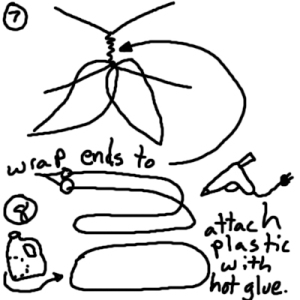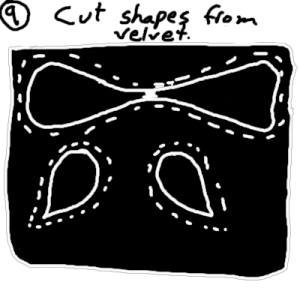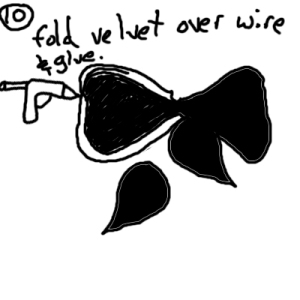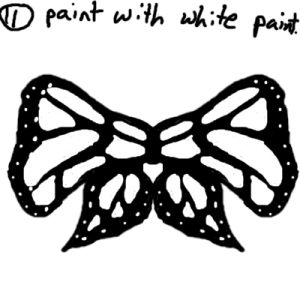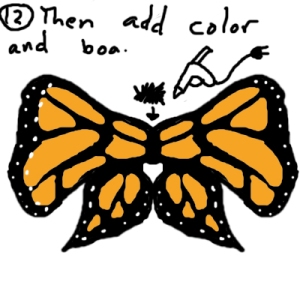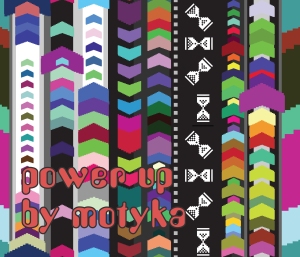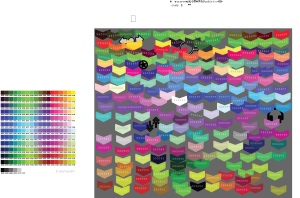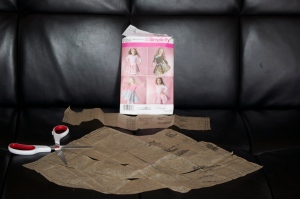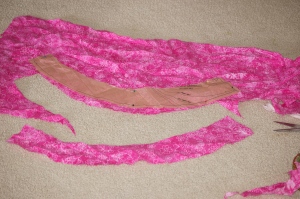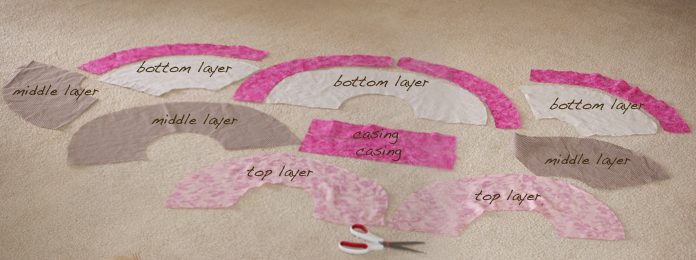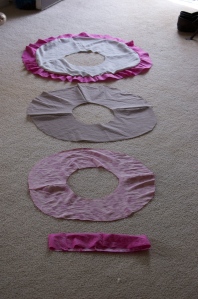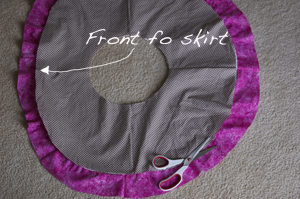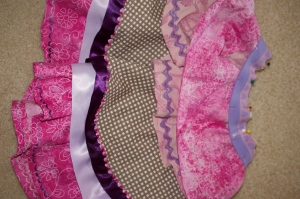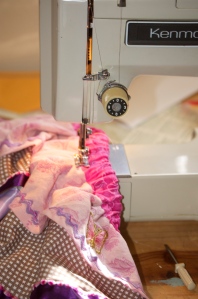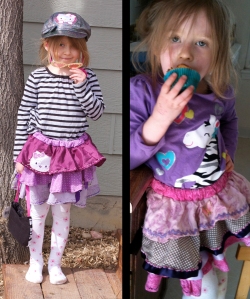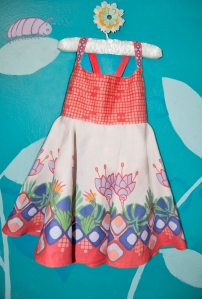
This is a tutorial for the Nile Lotus girl’s dress. The model in these instructions is a girl’s size 4, but you can easily tailor the dress for sizes 2 to 6 by following this tutorial. Other sizes can be accommodated with a little creativity on your part.
For this project, you’ll need:
- one yard of the Nile Lotus cut and sew pattern by motyka, available at: http://www.spoonflower.com/designs/1804950
- dress zipper
- pins
- 2 pieces of string for measuring (or a measuring tape, or long pieces of scrap fabric)
- tailor’s chalk
- an iron
- thread (I used mercerized cotton covered polyester)
- a sewing machine (This dress only uses straight stitches, I recommend setting the machine to 12 inches per stitch for all seams and hems)
- universal or medium weight sewing needle (I used a double needle for finished hem lines)
- pinking sheers (optional)
- shoe lace (optional)
Directions:
When your pattern arrives, it will look like this. You will need to wash and iron it before you start.
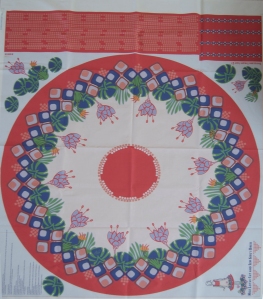
Step 1: Carefully cut out all pieces along the dotted lines on the pattern, like this:
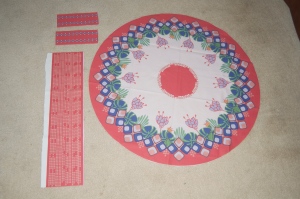
Step 2: Cut the skirt to fit. Here’s how.
Using a piece of string or leftover fabric, measure your child’s waist. add three inches and cut. like this:
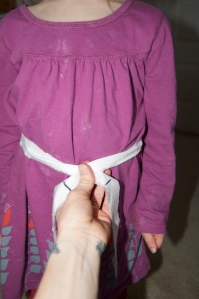
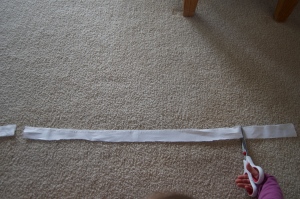
Step 3: Shape the string into a circle with 1/4 inch overlap. Center the circle in the middle of the circle and using tailor’s chalk, outline the circle onto the center of the fabric. This will make the skirt of the dress. Like this:
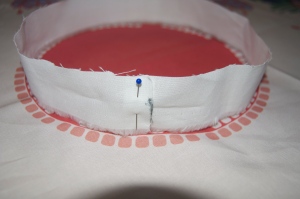
Step 4: Cut out the center of the dress around your outline (The red circle in the center fits a size 4 waist).
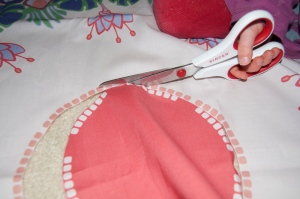
Step 5: Cut the bodice to fit. Here’s how.
Using another piece of string, measure your child’s chest and add three inches. Cut the string. This will be the length of the bodice. Mark and trim the bodice to match the length of the string.
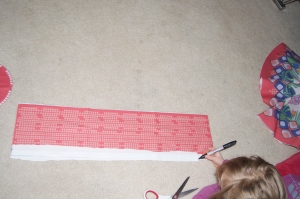
Step 6: Shape the top pf the bodice (this gets a little tricky. If you are a beginning sewer, you may want to leave the bodice as a rectangle and skip ahead to attaching shoulder straps as indicated in the directions printed on the pattern).
Fold the rectangular bodice in half. Place the fold on the center of your child’s chest, and carefully use a pin to mark where you want the front of the shoulder straps to lay. Like this:
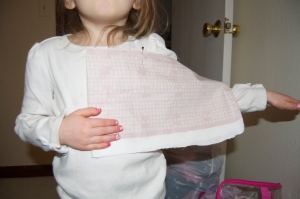
Step 7: Cut a shallow scoop neck by trimming one inch off the top of the folded bodice from the center fold to 1/2 inch before the pin. Taper at about 2 inches from the shoulder strap pin.
Step 8: Use a pin to mark where you want the bottom of the arm hole to lay.
Have your model stand with her arms straight up and position the fold of the bodice at the center of her chest. Carefully place a pin under her armpit where you want the bottom of the arm hole to lay (this step is not actually pictured). When you place the armpit pin, the bodice should look like this:
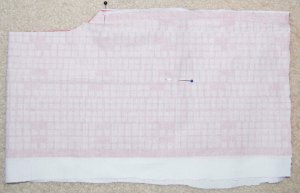
Step 9: Fold the ends of the bodice back toward the center along the armpit pin. Carefully cut out a scoop shape for armholes.
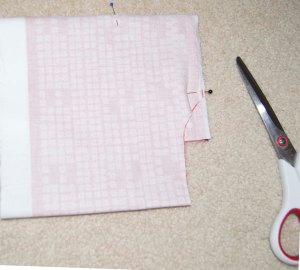
Lay the bodice flat, and if you have pinking sheers, carefully trim the edges of curves so they will be stronger and lay flat when you make the seam allowance. It should look like this:
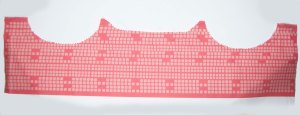
Step 10: Make skinny shoulder straps. Here’s how.
Cut shoulder straps in half long ways.
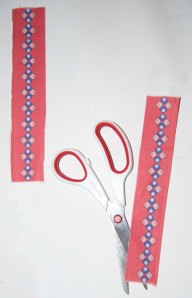
Step 11: Sew two shoulder straps together end to end, like this:
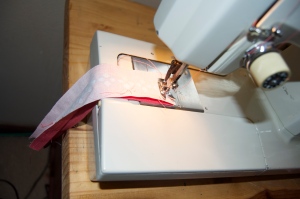
Repeat. Now you have two very long shoulder straps.
Step 12: Here’s a trick for making skinny straps. If you sew a long, strong shoe lace to one end of the strap and then fold and pin the strap around it, you can pull the string to easily turn it inside out. Try it.
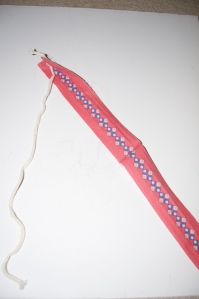
Step 13: Fold straps in half lengthwise and pin. Sew with 1/8 inch seam allowance. Like this:
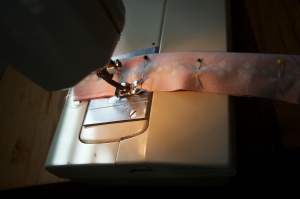
Step 14: Gently tug the shoe lace to turn shoulder straps right side out. Like this:
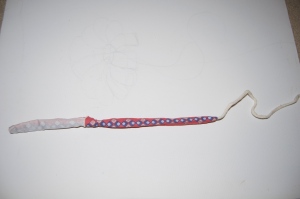
Step 15: Remove the shoe lace and iron flat.
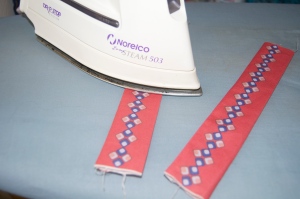
Step 16: Finish the straps with a 1/8 inch hem on each side.
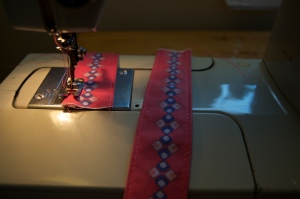
Step 17: Attach shoulder straps. Here’s how.
Fold, iron and pin 1/4 inch seam allowance around top of bodice. Pin shoulder straps in place between front neck scoop and arm holes. Sew a finishing hem around arm holes and front of bodice.
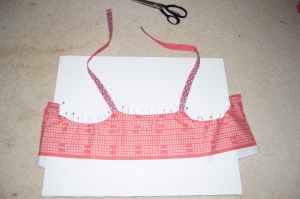
Step 18: Remove pins from front. Fit bodice on your child and trim shoulder straps, giving yourself 1/4 inch seam allowance for back. fold seam allowance on back and sew the ends of the shoulder straps in place.
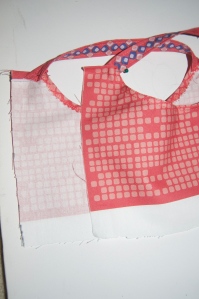
Step 19:
Sew 1/4 inch seam allowance on both ends of bodice.
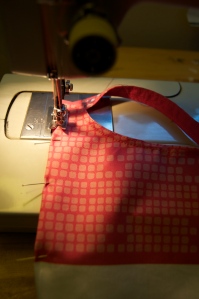
Step 20: attach zipper
With zipper closed, pin bodice ends to both sides of zipper iron and sew.
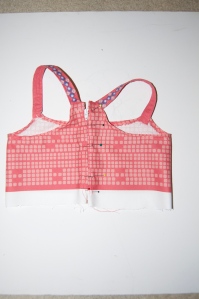
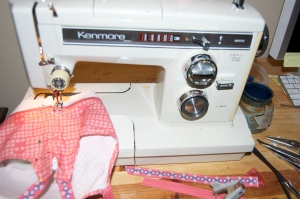
Step 21: Attach bodice to skirt. Here’s how.
Pin facing sides together. Start by attaching the front center of the skirt to the front center of the bodice with one pin. Find the back center of the skirt and attach to the back center of the bodice (where the zipper is). Pin with one pin. Find half of left side of skirt and half of left side of bodice and pin. Repeat on right side. Continue attaching skirt to bodice at half intervals until you have pins at about every half-inch around waist. This will ensure an even gathering and pretty seam.
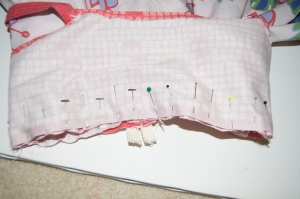
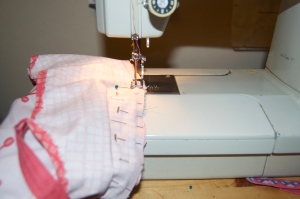
Step 22: hem skirt.
Fold, iron and pin 1/4 inch seam around base of skirt and sew. Remove pins when finished.
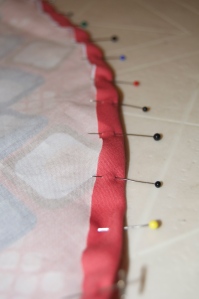
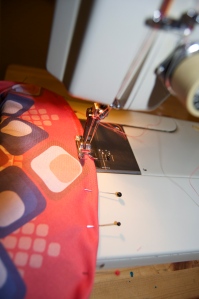
Step 23:
Iron and enjoy!

Tags: cut and sew girl's dress pattern, cut and sew tutorial




